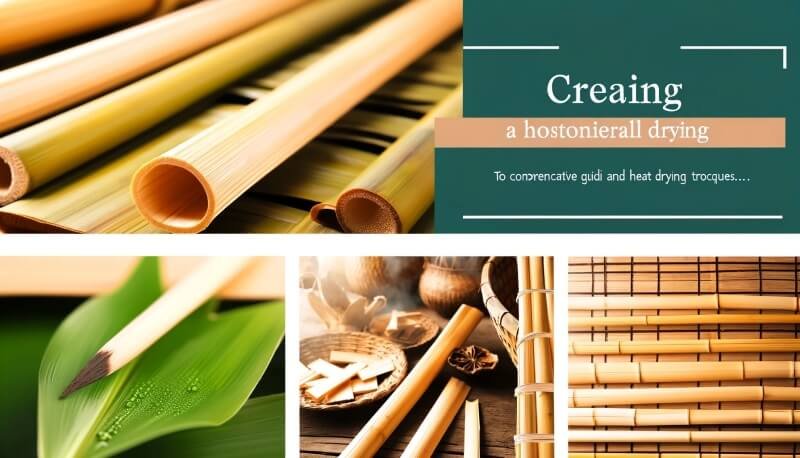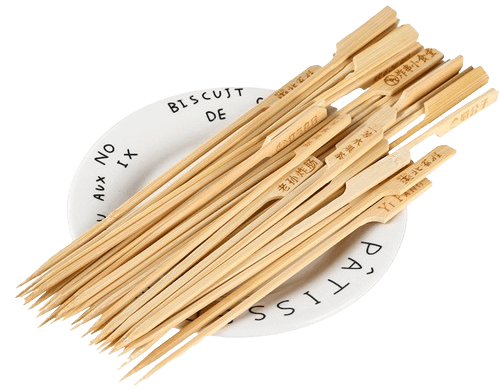At EcoStix Global, we’re not just about creating bamboo products; we’re about inspiring a movement towards sustainable living through innovation and traditional craftsmanship. Our mission is revolutionizing how the world views and utilizes bamboo – from chopsticks to versatile bamboo sticks, each product is a step towards a more eco-conscious lifestyle. In line with our vision, we present a comprehensive guide on drying bamboo sticks, a crucial step in ensuring the durability and usability of bamboo for a variety of purposes.
Key Takeaways Table:
| Key Aspect | Details |
|---|---|
| Why Dry Bamboo | Cleaning, ensuring nodes are debris-free for effective airflow |
| Selecting Bamboo | Mature bamboo of at least 3 years old, specific species like Moso and Tonkin |
| Preparation Steps | Cleaning, ensuring nodes are debris-free for effective air flow |
| Drying Techniques | Air drying, Heat drying, Additional methods |
| Effective Drying Tips | Good ventilation, avoiding soil contact, rotating bamboo regularly |
| Post-Drying Handling | Inspection for integrity, proper storage to maintain condition |
Introduction
Bamboo, a symbol of resilience and sustainability, plays a pivotal role in our eco-conscious journey at EcoStix Global. Drying bamboo sticks correctly not only preserves their natural beauty but also enhances their utility across various domains, from construction to creative décor. This guide dives into the essence of drying bamboo sticks, ensuring they meet the high standards of durability, aesthetics, and environmental friendliness.
Why Dry Bamboo Sticks?
Drying bamboo sticks is imperative for several reasons:
- Prevention of Decay and Mold: Freshly harvested bamboo contains moisture that can lead to rotting and mold if not addressed.
- Increased Hardness and Durability: Removing excess moisture strengthens the bamboo fibers, making them denser and more resilient.
Understanding the necessity to dry bamboo sets the stage for a detailed exploration into selecting the right bamboo, preparing it for drying, and choosing the appropriate drying method.
Selecting Bamboo for Drying
The first step towards successful bamboo drying is selecting the right type. Not all bamboo species are created equal when it comes to drying. We recommend focusing on mature bamboo, ideally at least three years old, from species known for their drying compatibility, such as Moso and Tonkin. These species are celebrated for their fine fiber composition and tensile strength, ensuring they withstand the stresses of the drying process without compromising quality.
Preparing Bamboo for Drying
Preparation is key. Before embarking on the drying process, ensure each bamboo stick is cleaned and free from debris. This not only facilitates effective airflow during drying but also prevents any potential moisture traps that could hinder the drying process.
Drying Techniques
1. Air Drying Method
The most natural and cost-effective method, air drying leverages the elements to slowly remove moisture from bamboo sticks. The process involves:
- Setting Up the Right Conditions: Create a drying space that allows for ample air circulation and protection from direct sunlight and moisture.
- Stacking and Rotation: Properly stacking the bamboo sticks to maximize airflow and regularly rotating them to ensure even drying.
Air drying is a testament to patience, often requiring several weeks to achieve optimal results. Yet, it’s the simplicity and low cost of this method that make it a preferred choice among many.
2. Heat Drying Method
For those seeking a quicker solution, heat drying offers a faster yet more resource-intensive alternative. This method uses a controlled heat source to accelerate moisture evaporation from the bamboo sticks. While effective, it demands close monitoring to prevent overheating and potential cracking of the bamboo. The key steps involve setting up a safe heat source, closely monitoring the bamboo, and periodically wiping the bamboo to bring out its natural oils, which help seal and protect the surface.
Each drying method has its merits and considerations, but regardless of the chosen method, the goal remains the same: to achieve durable, high-quality bamboo sticks ready for a multitude of applications.
Drying Techniques for Bamboo Sticks
After understanding the why and how of preparing bamboo for drying, let’s delve into the techniques that ensure your bamboo sticks retain their quality and durability. At EcoStix Global, we prioritize methods that not only preserve the integrity of the bamboo but also enhance its aesthetic appeal, aligning with our commitment to eco-friendly and sustainable practices.
Air Drying Method
Air drying is the most commonly employed method due to its simplicity and cost-effectiveness. Here’s how you can air-dry bamboo sticks efficiently:
- Setting Up the Drying Space: Identify an area with good air circulation and protection from direct sunlight. An indoor space like a barn or shed works well, but if outdoors, ensure the bamboo is covered to protect it from rain without trapping moisture.
- Laying Out the Bamboo: Lay the bamboo sticks in a way that maximizes airflow. You can stack them vertically with spacers or horizontally on raised platforms. Avoid direct contact with soil to prevent mold and ensure even drying.
- Regular Monitoring and Rotation: Rotate the bamboo sticks every 1-3 weeks to prevent warping and ensure even drying. This process typically takes 6-12 weeks, depending on environmental conditions and the bamboo’s moisture content.
Heat Drying Method
For those requiring a quicker drying process, heat drying is an alternative. It requires more equipment and careful monitoring:
- Preparing the Heat Source: A kiln or a controlled fire pit can be used to provide a consistent heat source. The temperature should be maintained at around 250°F (120°C) to ensure the bamboo does not burn.
- Monitoring and Rotation: Constantly monitor the bamboo sticks to prevent overheating. Rotate them to ensure even exposure to the heat source.
- Resin Wiping: As bamboo heats up, its natural resins will surface, acting as a sealant. Wipe these resins off periodically to aid in the drying process and to preserve the bamboo.
Post-Drying Care
Once your bamboo sticks are dried, a few steps are necessary to prepare them for use or storage:
- Inspection: Check each bamboo stick for integrity. Discard or set aside any that have cracked excessively or show signs of weakness.
- Storage: Store the dried bamboo in a cool, dry place away from direct sunlight or moisture. Proper storage ensures the bamboo sticks remain durable and are ready for use in crafts, construction, or as sustainable chopsticks and utensils.
Conclusion
Drying bamboo sticks is an essential step in their preparation for use in various applications. By following these detailed techniques, you ensure that your bamboo remains strong, durable, and aesthetically pleasing. At EcoStix Global, our commitment to sustainable practices and high-quality bamboo products is reflected in our meticulous approach to every step of the bamboo processing journey. From selection and preparation to drying and storage, we champion eco-friendly methods that meet our high standards and the expectations of our customers.
Embrace the versatility and sustainability of bamboo with EcoStix Global. Discover more about our range of bamboo products and our dedication to environmental stewardship at EcoStix Global.



